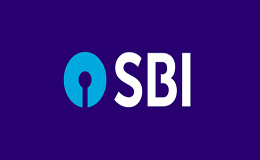Overview
Publications
Recruitment
Intranet
CIFRI Corners'
 Vadodara Research Station of ICAR-Central Inland Fisheries Research Institute (CIFRI) on 18.10.2022 demonstrated ‘CIFRI HDPE Pen Technology’ at Ukai Dam, Dist. Tapi, Gujarat to the tribal fishers of ‘The Bavli Vibhag Majdoor Kamdar Sahakari Mandli Ltd. Songadh, Dist-Tapi. About 30,000 fish seeds of catla and rohu were released in the 0.1 Ha CIFRI HDPE Pen for production of stockable size fish fingerlings for Ukai Dam.
Availability of stockable size fish fingerlings is one of the bottlenecks in increasing fish production from reservoirs in India. ‘CIFRI HDPE Pen’ is a technology developed by ICAR-Central Inland Fisheries Research Institute to provide opportunity to the fishermen to raise the stockable size fish fingerlings at reservoir site by enclosing part of the reservoir. This technology has been successfully used in states of Bihar, West Bengal, Odisha, Assam, Uttar Pradesh etc., in wetlands and reservoirs. In view of increasing fish production from reservoirs of Gujarat, Vadodara Research Station of ICAR-CIFRI is demonstrating this technology in the state under the Schedule Tribe Component (STC) of Central Government.
Vadodara Research Station of ICAR-Central Inland Fisheries Research Institute (CIFRI) on 18.10.2022 demonstrated ‘CIFRI HDPE Pen Technology’ at Ukai Dam, Dist. Tapi, Gujarat to the tribal fishers of ‘The Bavli Vibhag Majdoor Kamdar Sahakari Mandli Ltd. Songadh, Dist-Tapi. About 30,000 fish seeds of catla and rohu were released in the 0.1 Ha CIFRI HDPE Pen for production of stockable size fish fingerlings for Ukai Dam.
Availability of stockable size fish fingerlings is one of the bottlenecks in increasing fish production from reservoirs in India. ‘CIFRI HDPE Pen’ is a technology developed by ICAR-Central Inland Fisheries Research Institute to provide opportunity to the fishermen to raise the stockable size fish fingerlings at reservoir site by enclosing part of the reservoir. This technology has been successfully used in states of Bihar, West Bengal, Odisha, Assam, Uttar Pradesh etc., in wetlands and reservoirs. In view of increasing fish production from reservoirs of Gujarat, Vadodara Research Station of ICAR-CIFRI is demonstrating this technology in the state under the Schedule Tribe Component (STC) of Central Government.
 The programme was attended by Dr S. P. Kamble, Scientist In-Charge, Jayesh K Solanki, Technical Officer, J. C. Solanki, SSS of Vadodara Research Station and Shri Rutvik Tandel, Fisheries Officer, Department of Fisheries, Gujarat Govt., Shri Jigneshbhai Gamit and other members of the Mandali. During the programme tribal fishers of the Mandali were trained on stocking of fish seed, feeding and other management aspects of the CIFRI HDPE Pen.
The programme was attended by Dr S. P. Kamble, Scientist In-Charge, Jayesh K Solanki, Technical Officer, J. C. Solanki, SSS of Vadodara Research Station and Shri Rutvik Tandel, Fisheries Officer, Department of Fisheries, Gujarat Govt., Shri Jigneshbhai Gamit and other members of the Mandali. During the programme tribal fishers of the Mandali were trained on stocking of fish seed, feeding and other management aspects of the CIFRI HDPE Pen.










